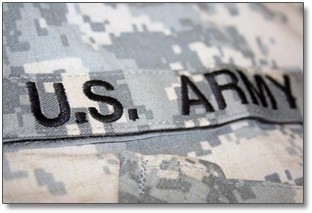Soldiers Could Communicate Through Their Uniforms

By Samba Lampich
Massachusetts Institute of Technology (MIT) is not a leader in fashion, but some of its scientists are turning soldiers’ fatigues into quite a statement. In a joint venture, the U.S. Army and MIT are working to weave microscopic fiber-optic-like gold threads into uniforms that would enable soldiers to detect light, heat and sound.
Fibers are Devices
The fibers are an entirely new communication device, although they are currently not yet able to carry out that function. Unlike other devices, they do not have any transistors, circuitry or processors. “These are new kinds of fibers that are themselves devices,” says John Joannopoulos, the director of the Institute for Soldier Nanotechnologies. The fibers are about a millimeter in diameter, which is too thick to sew into a uniform, and Joannopoulos wants to scale down to 100 microns. The team plans to test and refine the concept and design in the next 10 years.
From the Lab to the Battlefield
The technology would have several applications that could save lives and make communication easier and faster.
The fibers could be used to identify friendly soldiers at night, in the distance or on smoky and rapidly changing battlefields. They could shine lasers on other soldiers’ uniforms and, if they were wearing the same uniform, the fibers would sense it and send a signal back.
These uniforms would also be helpful to medics who could identify a soldier’s wounds by examining heat patterns from the fibers on the uniform.
“Your uniform would transmit that information. You wouldn’t be talking, it would transmit information: who you are, what time you went down, where the wounds are, what is the estimated severity of the wound, et cetera,” Joannopoulos says. “The idea with these fibers is that eventually, we’d like to enable full-body sensing for the soldier.”
Ironing Out the Kinks
The concept and design also pose some challenges. The fibers can only transmit data within a 75m distance and they function only when in the line of sight of the other uniforms with fibers. If there’s an obstacle, such as a tree or structure, the communication is compromised.
The fibers may eventually supplement other communications methods, such as radio and phone, providing options for soldiers facing the unpredictability of the battlefield.
Classroom Discussion
- In what other fields/professions would such fibers be useful?
- What would be the benefits of having a non-verbal form of communication?